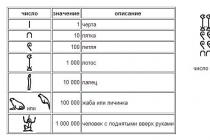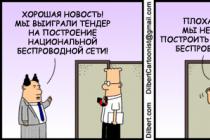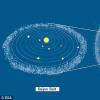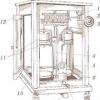Far beyond the orbit of Neptune, there are trillions of asteroids and comets left over from the formation of the solar system. They are in an area known as the Oort cloud. Here, they fly in relatively stable orbits around the Sun, posing little threats to the Earth with the exception of the occasional asteroids being pushed in the direction of the Earth. But in the blink of an eye, things could change when a star passes near our solar system and rains down thousands of deadly comets from the Oort cloud, according to Dr. Corey Jones of the Planck Institute for Astronomy in Heidelberg, Germany, there are several stars that can pose a danger to our solar system.

When our Sun makes its way through the Milky Way, it approaches very dangerous stars. Scientists estimate that there is a 90 percent chance that one of these stars will come as close as 0.13 light years to the solar system. It may seem distant, but given that the Oort cloud extends for about 0.8 light years, the star will be critically close and disrupt the stability of a huge number of cosmic bodies in the Oort cloud, pushing them out of orbits that are safe for us and sending them flying towards The earth. this flight will be the last for the Earth.

The biggest threat is the star Hip 85605. This star is slightly smaller than our Sun. Hip 85605 has a 90% chance of breaking the Oort cloud. There are other stars that are just as dangerous. GL 710, for example. When that moment comes, all people will see a bright star in the sky. it will be slightly brighter than Venus, but not as bright as the Moon or the Sun. However, the appearance of such a "death star" will bring not only disruption to the stability of the orbits of asteroids in the Oort cloud, but also lethal radiation from the star itself. Its ionizing radiation will kill all living organisms and destroy the ozone layer of the Earth, which will make life on our planet impossible due to the destructive solar ultraviolet radiation. Scientists are careful in indicating the timing of such an event and say that it will happen in the next 240,000 years, sooner or later. but it will happen. This happens regularly - once every 500,000 years. This has already happened to the Earth before and all life on it perished and it will happen again. This is the cosmic cycle of life and death ...
Oort Cloud
Executioner of planet Earth
Why will humanity die? When will this happen? How? Where are the threats coming from? All these questions once again covered the best minds of the planet after the decoding and interpretation of the Mayan calendar. The newspapers were full of gloomy predictions, self-styled prophets began to speculate about exactly how the Earth would be destroyed, and astronomers moved closer to telescopes.
Indeed, if from somewhere it is possible to expect a strike capable of exterminating all life on the planet at once, then only from space. The unimaginably huge, little-studied, mysterious emptiness surrounding our blue ball, undoubtedly, can conceal such a danger. And science is still unable not only to prevent the strike, but even to reliably predict the threat. As soon as the astronomical community begins to think that people have come close to understanding the structure of the Galaxy, it turns out that not much is known about the solar system yet. And what is happening on its outskirts is a mystery at all.
Fire streak
In 1932, the Estonian astronomer Ernst Epik put forward the theory that at the outer boundaries of the system there is a cluster of small objects revolving around the Sun in an ultra-distant orbit - the source of comet formation. In the early 1950s, this idea was developed and elevated to the rank of theory by the famous Dutch astronomer Jan Hendrik Oort - this hypothetical cloud was named in his honor. The scientist suggested that the notorious cluster contains an unimaginable amount of frozen pieces of methane, nitrogen, hydrogen and other elements, from which our world once formed. It is located at a distance of more than 150 thousand astronomical units from the Sun. But due to the colossal distance and average density, it cannot be seen with modern equipment.
That is why the existence of the Oort cloud is still nothing more than a hypothesis. But, on the other hand, if it does exist, then it should affect the quality of photographs of objects outside the solar system. That is, the images will turn out to be slightly blurry, blurry or grainy - as if they were made through a translucent veil. However, nothing like this happens - the photos are clear and bright.
The main feature of the Oort cloud is in its border position. This object of the system is influenced by the magnetic fields of the giant planets and the Sun - and at the same time the gravitational fields of nearby stars. Due to this, the speed of flight of ice blocks in the cluster changes so much that they sometimes break out of their orbits and even fall into the vicinity of the Sun. Finding themselves in a strict and orderly environment in the center of the solar system, where each object has its own orbit and place, the ice begins to melt quickly, they have a "tail" of evaporating gas and they turn into periodic comets.
The existence of such celestial bodies, by the way, led to the emergence of the "cloud theory". After all, a comet cannot fly endlessly in outer space - according to the logic of things, it will then constantly lose its material and gradually disappear. And since the Universe is infinite, we would have one in a million chance to see such a wanderer at least once in our life.
But the existence of a certain cometary "deposit" would easily explain the appearance of short-period comets, whose orbits lie in the same plane with the planets of the solar system. However, where long-period comets come from is not yet known to science.
Bulletproof vest
There is a version that in fact the mysterious cloud is a man-made sarcophagus created by an ancient great civilization to protect our world from roaming meteorites and galactic comets. Say, this kind of "bulletproof vest" is a sphere made of giant blocks, each one thousand kilometers long. The stones are made up in a special way - "checkered" and in several layers - so as to transmit light and not limit the visibility of the starry sky. The defenders of this esoteric theory and opponents of the assumption of the natural origin of the cluster notice that such formations limit the view - for example, many nebulae in the Milky Way hide part of the starry sky from the human view. And such a design as Oort's "bulletproof vest" somehow provides good visibility from any angle.
Cradle of the universe
The idea of the primordial nature of the Oort cloud looks very attractive to researchers. More precisely, that this mysterious region is the remnant of the protoplanetary nebula from which the solar system originated. Long ago, a new star appeared in our Galaxy, wrapped in a cloud of stardust and gas. Planets began to form from these substances, under the influence of the energy of the star, they acquired a spherical shape, settled in their orbits ... The remnants of building material gradually gathered on the outskirts of the system, away from the young star. All natural space debris was dumped there - fragments of stones, gas accumulations, which later became asteroids and protocometers.
But even if we assume that it is the Oort cloud that is the primary source of comets, then it still cannot be bottomless. The solar system has existed for billions of years, celestial bodies periodically collide, collapse ... The reserves of the cloud would have been exhausted long ago, if they had not been replenished from somewhere outside.
An article recently published in Science discussed the possible outer origins of the largest comets, such as the famous Halley and Hale-Bopp comets. The author of this idea, Dr. Harold Levison of the Southwest Research Institute (USA, Colorado), stated that in fact these tailed travelers were "dragged" by the young Sun from "neighboring" stars from the same cluster. The protoplanetary nebula around these stars was probably very dense and solid - the larger and hotter the star, the more voluminous and richer its "environment". Our Sun was not big. Therefore, we probably received our Oort cloud after the fact, as an unnecessary "clump of wool" from our larger neighbors. And now it is a kind of transit point through which foreign bodies get to us.
Kuiper Belt
Literally simultaneously with Ian Oort, in 1951, the American astronomer Gerard Kuiper made the following assumption: behind the orbit of Neptune there is an asteroid belt, in which most of the periodic comets are formed. It is much closer than the mysterious Oort cloud - and, as a result, it is being observed and studied.
The giant ring 15 astronomical units wide is, in fact, the first level of the space dump of building debris, which was mentioned above. In addition to billions of asteroids and comets, this zone most likely includes much larger objects, primarily the ninth sub-planet Pluto. Together with it, dozens or even hundreds of ice spheres, which are not inferior in size, can rotate along the "cosmic belt". So far, these celestial bodies are called trans-Neptunian objects. But the features of their orbits, structure (stone balls, covered with methane or water ice) - all suggest that the notorious planetoids were formed much closer to the Sun. But then - about 4 billion years ago - the powerful magnetic fields of the giants Jupiter, Saturn and Uranus simply threw their smaller brothers to the outskirts of the solar system.
Already today, science knows 8 large trans-Neptunian objects: the long and closely studied Kwavar, Sedna, Ixion, Varuna, Chaos, as well as the three newcomers - Santa, Easterbanni and Eris. Pluto itself joined them not so long ago - in 2006 the International Astronomical Union excluded it from the list of planets, equating it in status with the rest of the bodies of the Kuiper belt.
How fair the decision of the IAS was - today it is difficult to say. But more and more evidence suggests that the usual simple diagram of the solar system is very far from the truth. That the favorites of our star, receiving the most of its light and warmth - Mercury, Venus, Earth and Mars - are in fact in the minority. And the bulk of the planetary family is, most likely, objects of the Kuiper belt covered with the darkness of ignorance.
Among the constituents of the belt there is another category of celestial bodies - "centaurs", which received such a name, since they simultaneously have the characteristics of comets and asteroids. In 1977, Chiron was discovered - an object with a nucleus and a tail, but in size several times larger than the largest known comets. True, in the belt itself, such celestial bodies are not observed, but they regularly "run away" from there. Today, more than 20 "centaurs" live somewhere between Jupiter and Neptune. As long as they move in their orbits, everything is in order. But if suddenly one of them collides with another or with an ordinary asteroid, the whole herd will rebel. It is not so difficult to predict what will happen then - with the mass of large asteroids and the nasty nature of large comets, the "centaurs" will make a real hell in the solar system.
With a fortunate coincidence, the giant boulders will fall apart before reaching the Earth, from collisions with other heavenly wanderers. Then they will turn into hundreds of small "sun-scratching" comets and will be gradually absorbed by the light. If the scenario is unsuccessful, the heavenly wanderer will meet with our planet.
Plutonize
In 2006, the IAU finally formulated what criteria a celestial object must meet to be considered a planet. It should revolve in an orbit around the Sun, have a spherical shape and be an "orbital dominant". According to the last parameter, Pluto is not a planet - other celestial bodies are located in its orbit, sometimes larger than itself in size and not under its gravitational influence.
The decision was received by the public in different ways. In some states in the United States, debates have begun in a heated tone. Part of the California state legislature called the IAU's opinion a scientific heresy, and in the states of New Mexico and Illinois, it was officially decided to consider Pluto a planet, contrary to the opinion of the world community. The sentimentality of the Americans is understandable: Pluto is the only planet discovered by their compatriot, Clyde Tombaugh of Kansas.
The American Dialectological Society, in turn, introduced a new verb - "to pluto". "To plutonize" means "demoted in rank or status," as happened with the now former planet Pluto.
Space attack
Until now, the most likely blow from the cosmic forces was considered the fall of the asteroid Apophis, discovered in 2004 and named after the character of Egyptian mythology - a huge serpent that lives in the darkness of the underworld and every night tries to devour the Sun.
The estimated time of the maximum approach of Apophis to the Earth is 2029. But it is still difficult to indicate exactly whether it will collide with the surface of the planet or pass by without touching it. The consequences of its fall can be very different - from a global catastrophe to a "banal" earthquake with a magnitude of 7 on the Richter scale, an explosion or a tsunami (if the asteroid falls into the sea).
When the next discussion begins about the possible cause of the death of everything and everyone, the story of the appearance of the Chicxulub crater in Mexico is sure to be recalled. The colossal funnel was probably left by a celestial body at least 10 km in diameter. It is this killer asteroid that is believed to be responsible for the extinction of the dinosaurs. However, that time our mammalian ancestors were lucky - they survived. Even such a giant could not destroy life on Earth.
However, calculations show that in order to destroy the planet, a larger charge would be required - 40-50 km across.
Scientists claim that the probability of a collision of the Earth with an asteroid is one in a million. But mere mortals don't really read numbers very well. They single out only one thought from here - there is a danger!
To avoid confusion, MIT professor of planetary astronomy Richard Binzel suggested measuring the degree of asteroid hazard on a scale similar to the Richter scale for earthquakes. 0 is a zero probability of the Earth meeting with an unknown celestial body of a dangerous size, and 10 is one hundred percent, and the collision will definitely cause a global catastrophe and destroy all living things.
True, so far none of the potentially dangerous asteroids has received an assessment higher than four. An honorable 2 points were earned by the asteroid 2004 VD17, half a kilometer in diameter, which will fly up to our planet in 2102. The leader of the list was the formidable Apophis, who in December 2004 was awarded the fourth degree of danger (close proximity, the probability of a collision is about 1%).
Sign of heaven
Since ancient times, people have retained a strong belief that comets appear in the sky for a reason and are the messengers of important historical events. This is often the case.
After the death of Julius Caesar, solemn multi-day games took place, at which the decree of the successor of the great commander, Emperor Augustus, was read out on the reckoning of the deceased to the gods. Simultaneously with the games, for seven days in a row, a beautiful tailed star appeared in the sky at about eleven o'clock, which unambiguously made the whole Roman people understand that this was Caesar's soul ascended to heaven.
But another Roman emperor, Nero, was very frightened by the appearance of a comet in 60 AD. He even gave her the heads of all the most distinguished men of Rome - if only she did not take his own. Nero's teacher, the philosopher Seneca, tried to somehow convince the insane ruler that there is nothing terrible in heavenly guests. But in vain.
Uninvited guest
Comets are much more dangerous in collisions. In 1994, the Sutherland Observatory, near Cape Town (South Africa), could observe the fall of one of them. Fortunately, we are not talking about Mother Earth, but about the meeting of the comet Shoemaker-Levy-9 with the surface of Jupiter. This catastrophe was already a foregone conclusion - after all, two years earlier, a celestial body fell into the gravitational field of the giant planet and began to rotate in its orbit, gradually disintegrating into parts. Having finally separated from each other, these fragments began to fall on the surface of Jupiter.
According to the observatory, the speed with which they hit the planet reached 60 km per second, and the explosion of each fragment was comparable in power to the explosion of 500 atomic bombs similar to those dropped on Hiroshima. And the bombing of the planet with all the fragments immediately gave an effect similar to the explosion of a nuclear arsenal, 10 thousand times larger than all the stocks of weapons on Earth. As a result, a huge burnt spot was formed, with an area twice the size of Europe.
Jupiter, of course, withstood the impact of the comet - after all, it is 11 times larger than the Earth, and it has nothing to lose - there is no life on the gas giant. But our planet has something to fear. But so far, none of the known comets plans to come close enough to us to repeat the Jupiter scenario.
Although no one will give a full guarantee that this is impossible. Achieving more or less high accuracy in measuring the motion of comets is a very difficult matter. Many of them fly perpendicularly across the earth's orbit - and at a tremendous speed. Orbital periods are very long, which greatly complicates the prediction of their occurrence. The loose structure of the comet's nucleus makes observation difficult and makes the calculations of its trajectory very approximate.
True, the accuracy will increase here - but only with a significant approach of the tailed guest. It will be possible to say with certainty whether the Earth will collide with a comet or not, it will be possible only a few months before the probable meeting.
If even a small comet crashes into our planet, human civilization cannot be avoided. And it's not about devastating tsunamis, earthquakes and fires that will start around the world. For several months, the Earth will be enveloped in millions of tons of dust, blocking the access of sunlight. There will be a sharp cooling of the atmosphere and surface of the Earth, many species of animals and plants will die out only due to the interruption of the process of photosynthesis. The surviving groups of people will fight with each other for the remaining food supplies and are unlikely to resemble a civilized society. The so-called "asteroid winter" will come, after which mankind will have to start a lot anew.
The oldest history of the Earth contains evidence of a collision with a comet. About 2.2 million years ago, such a celestial body with a core about a kilometer in diameter fell into the ocean between South America and Antarctica (the so-called Eltanin disaster). An unprecedented wave threw whales from the ocean into the Andes - today archaeologists are bewilderedly finding their remains. But at the same time, the ancestors of man who lived in Africa did not suffer.
Where do these wandering monsters come from? Do they come to us from afar, from other star systems and galaxies? What makes beautiful wandering stars turn into merciless assassins?
Planet X
All of us from school are familiar with the scheme of the solar system and its nine planets. Moreover, in almost all ancient cultures, this encyclopedic knowledge is reflected in mythology. The ancient Sumerians and Persians, Egyptians and Assyrians, Incas and Chinese - they all knew the nine heavenly deities and worshiped them. But again, in every ancient culture there is a mention of a mysterious celestial body that played an important role in the universe. The first among equals is the myth of Marduk-Nibiru, the Sumerian god associated with a celestial body unknown to science, only occasionally appearing in the sky.
Isn't this the mysterious Planet X that astronomers have been looking for throughout the past century? First, Percival Lowell predicted and calculated its possible location, then Clyde Tombaugh discovered Pluto to the world. And already in 1978, two astronomers from the US Naval Observatory in Washington, Robert Harrington and Tom Van Flandern, took another leap forward. They suggested that in fact Pluto did not have any independence, but was nothing more than a satellite of Neptune along with Charon. But the invading Neptune's domain, Planet X pushed Pluto out of orbit and simply forced it into an independent existence. According to scientists, the mysterious planet should be 3-4 times larger than the Earth and have a very elongated and strongly inclined orbit with respect to the general plane of rotation of the planets. So what was it all the same?
In 1983, IRAS (Infrared Astronomical Satellite) spotted in the darkness of cosmic distance in the direction of the constellation Orion an unknown large object, comparable in size to Jupiter. The object was generally close enough to suggest a relationship with the solar system. True, there is still a minimum of information about him. “The only thing I can say about this is that we don't know what it is,” said IRAS Principal Investigator Jerry Neugebauer.
Nibirians and Anunnaki
Of course, NASA's recognition instantly spawned a pile of modern myths. People who were very conventionally versed in astronomy began to organize societies, open information portals, where they promise to "tell the whole truth about Nibiru." For example, "contactee" Nancy Leader of Wisconsin claims to have been in close contact with her by beings calling themselves "zetas." They said: their mission is to prepare humanity for a new era and to enlighten it about the real structure of space.
According to the stories of Nancy Leader, Nibiru is one of the seven planets orbiting our Sun's twin, the Dark Star. There is no life on five minor planets, the sixth - the Motherland - is inhabited by a great civilization of humanoid giants "Anunnaki", and the seventh - Nibiru - is their warship.
Scientists quite expectedly commented on the statements of Ms. Leader. On April 1 of this year, the following message appeared on the website of the Pushchino Radio Astronomy Laboratory at the Physical Institute of the Russian Academy of Sciences: “An unexpected but happy ending for us: the planet Nibiru missed and crashed into the Sun!
Unfortunately, the great civilization of the Nibirians - the mighty Anunnaki - also came to an end ”...
The Death Star
Life and death replace each other on our planet with inevitable cyclicality. Archaeological, geological and paleobiological discoveries of recent years indicate that every 28-30 million years on Earth there is a mass extinction of living organisms. But what is it connected with?
The recurrence of these global holocausts makes scientists look for the cause in the cosmic cycles that the Earth obeys. What mind-boggling hypotheses have not been put forward by bright minds - for example, that our solar system at these fatal moments passes through the spiral arms of the Milky Way, due to which the oscillations of its galactic orbit occur. It is still impossible to test such hypotheses, so it remains either to take everything on faith, or to look for new options.
In 1984, at the University of California at Berkeley, Mark Davis and his colleagues proposed a new version. They stated that the Sun is actually a double star. In general, this may be logical - many of the system-forming stars we know have twins. So, the partner of the Sun is not visible to us, but in fact it is relatively close - two light years away. However, sometimes the uninvited guest comes too close - and then truly becomes worse than the Tatar. No wonder they gave her the name of the Greek goddess of vengeance, Nemesis.
Once every 27-30 million years, Nemesis, or, as it is often called in the press, the "death star", falls into the Oort cloud zone. Its approach means the beginning of the strongest disturbances in our small and harmonious planetary system, which will tear even the largest asteroids from their orbits. And from the Oort cloud, Nemesis will throw thousands of large comets. Colossal boulders, hundreds and thousands of kilometers in diameter, will begin to rush randomly through space, colliding with each other, scattering under the influence of solar energy and crashing into planets. Simultaneously with them, a cometary vortex will sweep through the closed system.
Even one accidental hit of a large asteroid on Earth is fraught with the destruction of human civilization. Needless to say, what consequences for the planet this comet-meteorite hurricane that will cover the solar system can turn out to be. Our planet will turn into a scorched desert without any hope for the revival of even single-celled life.
Adrian Melo of the University of Kansas and Richard Bambach of the National Museum of Natural History dispute the destructive role of Nemesis. And they rely, again, precisely on the regularity of the extinction of species. Their calculations indicate that the peaks of the extinction of living organisms with high accuracy occurred on Earth every 27 million years. While the hypothetical nemesis, moving in its orbit (distant from the Sun, weak, stretched), would most likely be subjected to the gravitational effects of nearby stars. Therefore, the periodicity of its appearance near the Oort cloud would not be so accurate at all. Additional “peaks” of death of all living things would arise, or the whole cycle would gradually shift in one direction or another. But the studies of Melo and Bambach, covering a period of 500 million years (!), Show nothing of the kind. On the contrary, with depressing persistence of facts they speak of the severity of the periods of extinction.
The idea of the presence of a companion star in the Sun worries not only biologists and lovers of creepy stories about the end of the world. She gives the ministers of science a real treat for the mind: “Perhaps everything is not at all what we thought earlier! The universe is arranged differently! "
Indeed, it is possible. Observations made with the Hubble telescope revealed two stars located not far from the Sun - HD 53143 and HD 139664 - which, by their parameters (mass, temperature, formed by magnetic fields), could form planetary systems around them and even give rise to life. Both stars are surrounded by a kind of "donut" of dark matter. This disk has an inhomogeneous structure, and with distance from the luminary, the density of its matter drops sharply. However, a companion star orbiting the main star regularly "cuts" the edge of the disk, keeping it from blurring. The companion star is most often a "brown dwarf" - that is, a celestial body with a much lower energy potential, which is in gravitational subordination with respect to the main luminary.
The theory here coincides with practice - the Kuiper belt in our system is extremely similar to this picture. Moreover, it is similar in structural characteristics to the described "dark matter disks". Perhaps its border is outlined by the same dark star moving along the outer orbit of the Sun in a different plane than the planet. Most likely, the object found in 1983 is our own "dwarf" twin.
The nearest threat from space
The commercialization and active exploration of near-Earth space by superpowers are so far from environmental standards that soon the Earth will be threatened by something less destructive than the fall of an asteroid or comet, but also very unpleasant.
Today, there are about 10 thousand tons of ordinary garbage in Earth's orbit. No one really cares about its fate - after all, part of the waste is regularly burned up, getting into the atmosphere. And how harmful the final substances remaining in the lower layers of the atmosphere are, is the tenth question for the developers of large space programs. Leave a comment
Your comment will be shown on the page after approval by the moderator.
The Oort cloud is a distant structure of the solar system, the existence of which is substantiated by theoretical calculations, but not proven in practice. It is believed that long-period comets begin their journey from here. Much information about our corner of the Universe, discovered in the course of research, is in good agreement with the hypothesis of the existence of a cloud. Some space bodies already today officially bear the status of objects of this hypothetical structure. However, the Oort cloud itself has not yet been recorded.
Opening at the tip of the pen
The first mention of the possible existence of such a structure appeared in 1932. The author of the hypothesis was the Soviet scientist Ernst Epik. About twenty years later, in the 50s of the last century, the Dutch astronomer Jan Oort independently put forward a hypothesis about the existence of a structure that is the source of long-period comets. Subsequently, the hypothetical cloud received the name of this scientist.
The theories that existed at that time could not explain the fact that the solar system contains a fairly impressive number of comets. Their orbits are unstable and, logically, most of them should have collapsed as a result of collisions with each other or with more massive bodies. The material that make up comets is also short-lived. These are mainly volatiles that evaporate when a body approaches the Sun. This process quickly leads to the destruction of the nucleus.
Oort suggested that comets were formed not in their orbits, but in a region far from the star. They spend most of their "life" there. This hypothesis explains a significant number of structurally intact comets.
Homeland of the tailed wanderers
Today, the existence of the Oort cloud is recognized by a large number of astronomers around the world. Thus, in modern science, it is customary to distinguish two zones in which comets originate. The first is the associated Kuiper belt and scattered disk. They are considered to be the source of short-period comets. They are characterized by rather close orbits with a slight inclination to the plane of the ecliptic. The period of revolution of such bodies around the Sun is less than 200 years.

The second source is the Oort cloud. Here are the nuclei of long-period comets (orbital period is more than 200 years). They are characterized by elliptical, highly elongated orbits. As for the angle of inclination to the plane of the ecliptic, in the case of long-period comets, it can be very different.
Length

According to the most minimal estimates, the Oort cloud is located at a distance of 2-5 thousand astronomical units from the sun. As much as possible, it is pushed back up to 50-100 or even 200 amu. e. The outer part of the structure is the gravitational boundary of the solar system, the so-called Hill sphere. Its length is, according to scientists, two light years.
Structure

There are two Oort clouds of the solar system. The first - outer spherical - is located at a distance of 20-50 thousand astronomical units from the star. The second is called internal and has the shape of a torus. The outer cloud is less influenced by the Sun. It is it that is considered the "homeland" of long-period comets, as well as comets belonging to the Neptune family.
The inner ring is named the Hills Cloud after Jack Hills, the astronomer who suggested its existence in 1981. According to theoretical calculations, the inner cloud contains significantly more cometary nuclei than the outer one. From here, they presumably move from time to time to a more remote area. This is how the cometary "reserve" of the outer cloud is replenished.
Another likely source of cosmic bodies in the Oort structure is the scattered disk. According to the calculations of the Uruguayan astronomer Julio Angel Fernandez, about half of the objects in this part of the solar system are redirected to the outer region. It is possible that the scattered disk still supplies the Oort cloud with additional cometary nuclei.
Origin

The solar system formed about 4.6 billion years ago. According to scientists, at that time young planets and asteroids were formed around the star. The future objects of the Oort cloud were also formed here. After the appearance of such giants as Jupiter, Uranus and Neptune, the orbits of these cosmic bodies became much more elongated. Behind the trajectory of Pluto's motion, a structure consisting of cometary nuclei gradually began to form. According to scientists' calculations, the maximum total mass was reached by the Oort cloud approximately 800 million years after its appearance. Later in this area, the processes of reducing the number of objects began to prevail.
Evolution
The spherical shape of the outer cloud was formed under the influence of the gravity of nearby stars, as well as the so-called galactic tidal forces. The latter affect space objects like the Moon, affecting the waters of the oceans. The action of these factors changed the orbits of cometary nuclei: they became closer in shape to circular.
Astrophysicists note that a similar fate awaits the Hills cloud. Under the influence of the Sun, it will also acquire a spherical shape over time.
Objects

The "population" of the Oort cloud is billions of icy cosmic bodies. The total mass of its outer spherical part is estimated at 3 * 10 25 kg. A similar parameter for the Hills cloud remains unknown at the moment.
Ice objects as a result of the impact of passing stars fall into the inner regions of the solar system. Here they are classified as long-period comets.
Objects "inhabiting" the cloud, as well as the Kuiper belt, mainly consist of ice of various origins (frozen water, ammonia, methane). This is how the "local residents" differ from the cosmic bodies that fill the Main asteroid belt, which is located between the orbits of Jupiter and Mars.
Visitors from the edge of the solar system
In addition to long-period comets, the "inhabitants" of the Oort cloud include such trans-Neptunian objects as Sedna, 2000 CR 105, 2006 SQ 372, 2008 KV 42, and 2012 VP 113. Their orbits are characterized by a very distant aphelion and significant eccentricity. In 2008, evidence was presented that asteroid 2006 SQ 372 belongs to the objects of the Oort cloud. Scientists disagree about the origin of Sedna and 2000 CR 105. Some astronomers consider them to be the bodies of the scattered disk. All these objects today remain the most remote of the discovered in the solar system.
Difficulties
The main argument of opponents of the theory of the existence of the Oort cloud is the fact that no one has yet observed it. According to many scientists, in favor of the reliability of the hypothesis would be evidenced by graininess or blurring in photographs of distant space, made by the Hubble telescope. However, no such effects are observed. Questions also arise during a detailed examination of the hypothesis of the origin of the cloud.
Nevertheless, most of the scientific world is leaning towards the plausibility of the theory. Many observed facts, discovered and theoretically derived regularities are in good agreement with the hypothesis of the existence of the Oort cloud. Today, small bodies of the solar system: asteroids, comets, meteorites - are the focus of major international research projects. Therefore, it is likely that in the near future astrophysicists will receive information that will unambiguously prove or disprove Jan Oort's theory.














